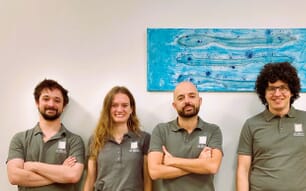The study was held on the Atlantic Coast of the Dominican Republic during the capture of live fry in 2012-2013 and 2013-2014.
Victorino Rodriguez Castillo, an aquaculture expert and professor of researcher at the ISA University of Santiago, lead the research project supported by researchers and specialists of the Dominican Institute of Agricultural and Forestry Research (IDIAF), Council Dominican Fisheries and Aquaculture (Codopesca) and ISA University, La Herradura in Santiago.
As noted by Mr Rodriguez, eels are in decline due to over historical exploitation of this resource in America, Europe and Asia.
The high complexity of the life cycle of the American eel contributes to the difficulty to determine the population status of this species. The American eel has been little studied. The historical data are scarce for most areas of the Atlantic, and there is no such information for South Carolina.
In the long term, data collected in the northeastern United States and southeastern Canada, indicate a decrease in the recruitment of young and adult populations (ASMFC 2000).
Furthermore, according to the Food and Agriculture Organisation, from the 1960s the species has decreased its population due to changes in the environment by pollution and construction of dams in riverbeds.
On the Atlantic coast of the Dominican Republic, the American eel has a low population density.
In the first phase of the research project, the current situation of American eel in the estuaries of the rivers of the Atlantic Coast of the Dominican Republic, and the effect of salinity and population density on adaptation, were evaluated.
Based on the results of the evaluation of the population status of the American eel, scientists concluded that the capture of live fry was higher in the period 2013-2014 than in 2012-2013. The index of catch per unit effort of live eel fry was higher in the period 2013-2014 than in 2012-2013.
Bajabonico river had the biggest catch with 1,110,000 fry, Yásica had 720,000 fingerlings, Yaque del Norte had a catch of 282,000 fry and 360,000 fingerlings were caught in the Yabón. December and January were the months of greatest capture of live eel fry.
The aquaculture treatment of eels with the lowest mortality rate was recorded at an eel population density of 50 per 12 litres of water and a period of decreased level of salinity of 20 days, which obtained a mortality rate of 16 per cent.
As for the weight gain of juvenile anguilla over a period of 30 days, the treatment with greater weight gain was 50 elvers per 12 litres of water and a period of decreased salinity levels of 30 days), with an average weight gain of 0.5125 g for this treatment.
Regarding the length gain of eel fry over a period of 30 days, the treatment with the highest gain in length was an eel population density of 40 per 12 litres of water and a period of decreased salinity levels of 30 days, with an average length gain of 0.2108 cm.
According to the Mr Rodriguez, this research project was initiated in 2012 and is due to be completed in 2017. He noted that in the second phase of the project for the period 2015-2017, the bycatch of American eel is due to be evaluated and behaviour in captivity of this fish species is of great importance in the Dominican Republic.
The results of the study will act as technological guidelines, and to shape further research into the possible management and commercial farming of this species in the Dominican Republic.



